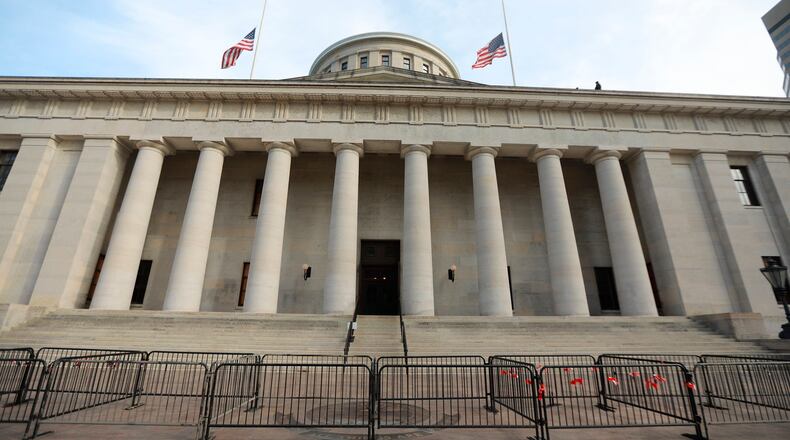That’s just part of House Bill 377, which passed the state House and Senate on June 1. Gov. Mike DeWine signed it June 28, and the ARPA funding doesn’t have to wait 90 days to become available. It will be disbursed through the Ohio Office of Budget & Management.
“As a former Madison Township Trustee, I have seen firsthand the issues that have come up due to the pandemic,” said state Rep. Thomas Hall, R-Madison Twp., in a news release. “This critical funding in the legislation is going to help townships recover from the effects of the pandemic and I am very excited to deliver these dollars to our local communities to support them moving forward.”
Hall cosponsored the bill with state Rep. D.J. Swearingen, R-Huron. The ARPA Coronavirus State and Local Fiscal Recovery Funds also include reallocation of $1.7 million that remaining unspent from the first round.
Hall has said the bill authorizes direct payments to states, counties and cities of more than 50,000. Other local governments, such as townships, will get money as pass-through funding from those larger entities.
House Bill 377 allocates another $500 million in federal funds for the Appalachian Community Grant Program, to be used in the 32 of Ohio’s 88 counties considered part of Appalachia.
It creates two categories of grants: one for planning, and one for actual development. The money can be used for “sustainable, transformational projects” that deal with infrastructure, workforce, or healthcare. All grant funds have to be spent by the end of 2026.
The same bill provides $20 million to pay for the Aug. 2 primary for state House and Senate seats, postponed from May due to the extended legal fight over legislative district maps. And it sets aside $750,000 for “weed harvesting operations at Indian Lake” in Logan County.
House Bill 377 also authorizes the disposal of 35 parcels of state-owned land or easements. That includes 1 acre in Montgomery owned by the Department of Public Safety, to be sold by sealed bid or at a public auction.
The first allocation of federal COVID-19 relief funds, totaling $350 billion nationwide, went for uses such as vaccine incentives, affordable housing, and water infrastructure, according to the final federal rules for the second round. Guidelines for use of the second allocation are somewhat broader. The money can now be used for capital projects related to public health or “economic response” to COVID-19.
“For example, recipients may build certain affordable housing, childcare facilities, schools, hospitals, and other projects consistent with final rule requirements,” the federal rule says. That includes lead-pipe replacement and stormwater management.
The broadened uses include community development and neighborhood revitalization for “disproportionately impacted communities,” as well as educational services to deal with pandemic-related learning loss.
Governments can also use the money to hire people, potentially paying more than before the pandemic, and boosting people who took pay cuts or furloughs.
About the Author

